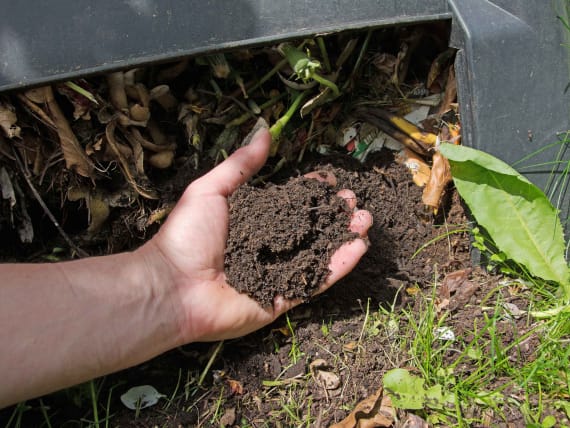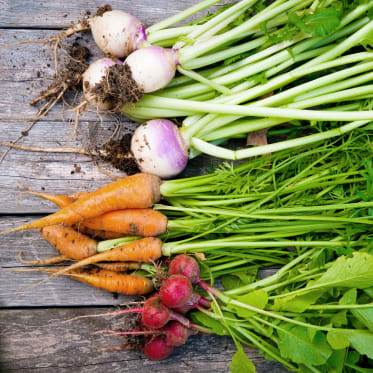Frequent search terms

- COMPO
- Guide
- Plant Care
- Basics
- Soil and compost
- What you should bear in mind when making a compost heap
What you should bear in mind when making a compost heap
Composting is a biological process in which organic material from your home and garden is converted into humus in a process in which oxygen, bacteria and microorganisms interact. Compost helps to enhance soil properties. Depending on the nutrient content, matured compost can also be used as fertiliser for flowerbeds and vegetable patches. Find out everything you need to know about composting here.

What types of waste can be composted?
Only waste consisting of organic material is suitable for compost. It is important that it does not contain any harmful substances or impurities such as plastic and composite materials, films, rubber, wood or bones. Otherwise the composting process will not work and your compost will not be suitable for later use.
The following are suitable for composting:
- Garden waste (but not diseased plants or seed-bearing weeds)
- Raw kitchen waste (fruit, vegetables)
- In moderation: dry grass and lawn cuttings
- Cuttings, brushwood and leaves
- Tubers and roots
- Straw
- Mulch
- Coffee filters and tea bags
- Egg shells
- In moderation: (news)paper, non-laminated and not printed in colour

What is the best spot for a compost heap?
It is advisable to choose a shaded or semi-shaded spot in your garden that is out of the wind for your compost heap. A sunny spot is not so suitable, as the compost will dry out quickly in the summer. Your compost heap needs to be in direct contact with the soil so that soil organisms such as earthworms can make themselves at home. So, don't put it on a firm surface (stone or concrete) under any circumstances. Look out for easy and convenient access when choosing the spot. And a little advice on not upsetting the neighbours: Don't position your compost heap directly on the edge of your property.
What should be kept in mind when making a compost heap?
Generally speaking, your compost heap should not be more than 1.5 m tall and wide. There must always be enough oxygen and moisture for the biological process. Compost heaps that are too loose dry out quickly, but heaps that are too compacted don't supply the soil organisms with enough oxygen. It is important that you mix the compost material well to get the right balance. The following generally applies: The more varied the mixture, the richer the compost.
To speed up the composting process, you should cut or chop all waste as small as possible. You can also add additional nutrients. For example, simply sprinkle our compost activator between each layer of freshly added compost material and mix in gently. It is biologically active and fast-acting. The result is high-quality mulch compost after six to eight weeks. On a side note, it is necessary to water the compost every now and again during prolonged dry spells.

When is the compost mature?
If the rotting process runs smoothly, the compost is normally semi-mature after two to three months. It will smell like fresh forest soil and have lost its fibrous structure, except for a few coarse components. The compost will be mature within one year. It is mature when the organic components have turned into brown, fragrant humus.

What is compost used for?
In principle, compost is suitable for your entire garden. It is especially suitable for use in kitchen gardens before planting in the spring as well as under trees and shrubs. You are better off not using compost for areas with acidophilic plants (rhododendron, fuchsias, ericas and calluna), as they would yellow.
Depending on the type of plants and amount of fertiliser already added, compost is spread up to five centimetres thick and raked at the surface level. It contains high quantities of phosphate and potassium. You should bear this in mind if you use other fertilisers in addition to the compost. Horn shavings perfectly complement the nutritional balance of compost and ensure an optimal fertilising effect when used in combination.
Why is surface composting worth the effort?
Surface composting complements composting in heaps well. This involves crop residues, leaves and dead plant parts being distributed on the soil right where they fall. You should only use coarsely structured and woody materials in chopped form in this case as well. The result is a mulch layer that significantly contributes to the health of the plants and the soil. It regulates the water and heat balance, keeps out the rain and wind, wards off weeds and protects soil organisms.
You might also be interested in these topics











